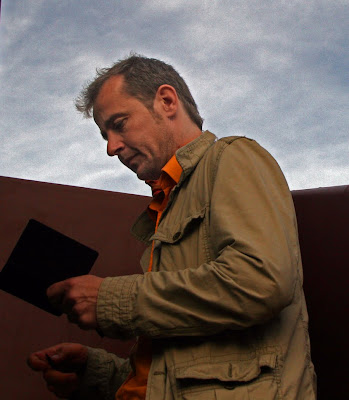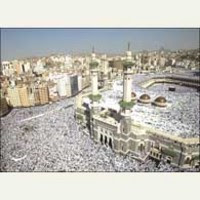Our London correspondant, Aurora Borealis, was at the House of Commons last week for the launch of Mahmood Jamal's anthology, Islamic Mystical Poetry. Here's her report:

The spiritual values that inspired the creation of the Fes Festival of World Sacred Music were articulated with profound eloquence at The House of Commons in London by HRH Prince Hassan of Jordan, who was Guest of Honour at a meeting to mark the publication of Mahmood Jamal's anthology Islamic Mystical Poetry.
 HRH Prince Hassan of Jordan
HRH Prince Hassan of JordanPrince Hassan has close connections with Fez. He was one of the early patrons of the Sacred Music Festival alongside HRHs The Prince of Wales and Prince Albert of Monaco. He is the brother of the late King Hussein and uncle to the present King Abdullah, whose wife Queen Rania attended the 2007 Festival.
The London event was organised by Third World Solidarity, an NGO that has established links with Fez and is planning a Fez-Lahore-London connection, similar to city twinning.
Prince Hassan has dedicated his life to Sufi spiritual values, which he highlights as the basis for a global humanitarian perspective that respects the truth inherent in all religions.
"Love, harmony and beauty are the underlying principles of Sufism", he says, "the Sufi poets celebrate moral values above politics. Sufism is not a separate sect, it is the inner, esoteric dimension of Islam."
It was clear to his listeners that Prince Hassan is a learned man, with a breadth of knowledge and experience that ranges "from Plato to NATO". Although his exposition was detailed - encompassing the arts, religion, culture and politics - his message was simple:
"There is an urgent need for a vocal citizens' movement. We can humanise globalisation if we recognise our shared consciousness. It is the suffering millions who really matter".
Prince Hassan highlighted this view in another recent speech:
"The voices for peace are encouraging substantial numbers of the public to engage in personal and political actions for peaceful transformation. These voices are growing ever stronger, building physical and spiritual bridges of collaboration among people and cultures across the world. Soon these voices will be heard by the world's politicians, corporations and media, and the masses will begin to realise themselves as part of an interdependent global community, dedicated to justice, goodwill and human dignity."
Prince Hassan ended his House of Commons address with a call to action:
"We need to act now or there will be no stability. If the world order stays the same as it is at present, in 10 years' time there will be 100 million people without jobs."
Mahmood Jamal, editor of the anthology
Mahmood Jamal (above), an author, poet and translator, echoed the Prince's point of view with a powerful critique of "narrow-minded extremism". He also echoed Sacred Music Festival founder Faouzi Skalli's perspective that Sufi values will prevail:
"Muslim civilisation as a whole will not be controlled by intolerant interpretations of Islam."
Helen Ranger reports on the poetry anthology, Islamic Mystical Poetry:
"Written from the ninth to the twentieth century, these poems represent the peak of Islamic Mystical writing, from Rabia Basri to Mian Mohammad Baksh. Reflecting both private devotional love and the attempt to attain union with God and become absorbed into the Divine, many poems in this edition are imbued with the symbols and metaphors that develop many of the central ideas of Sufism: the Lover, the Beloved, the Wine, and the Tavern; while others are more personal and echo the poet's battle to leave earthly love behind. These translations capture the passion of the original poetry and are accompanied by an introduction on Sufism and the common themes apparent in the works. This edition also includes suggested further reading."
The full text of Prince Hassan's speech will be available soon at www.elhassan.org.
Third World Solidarity: www.thirdworldsolidarity.org
Islamic Mystical Poetry is published by Penguin Classics and is available from Amazon.
Photos: Matthew Buxton
















































